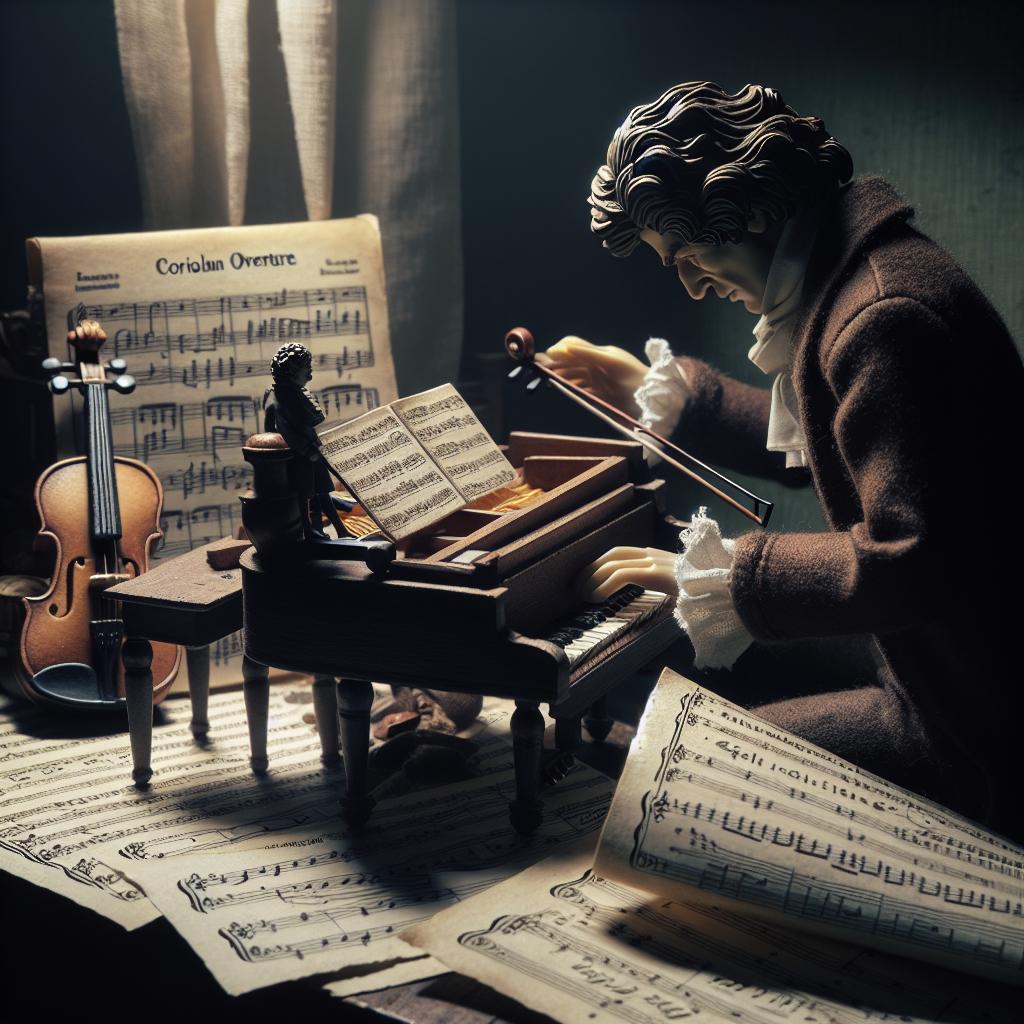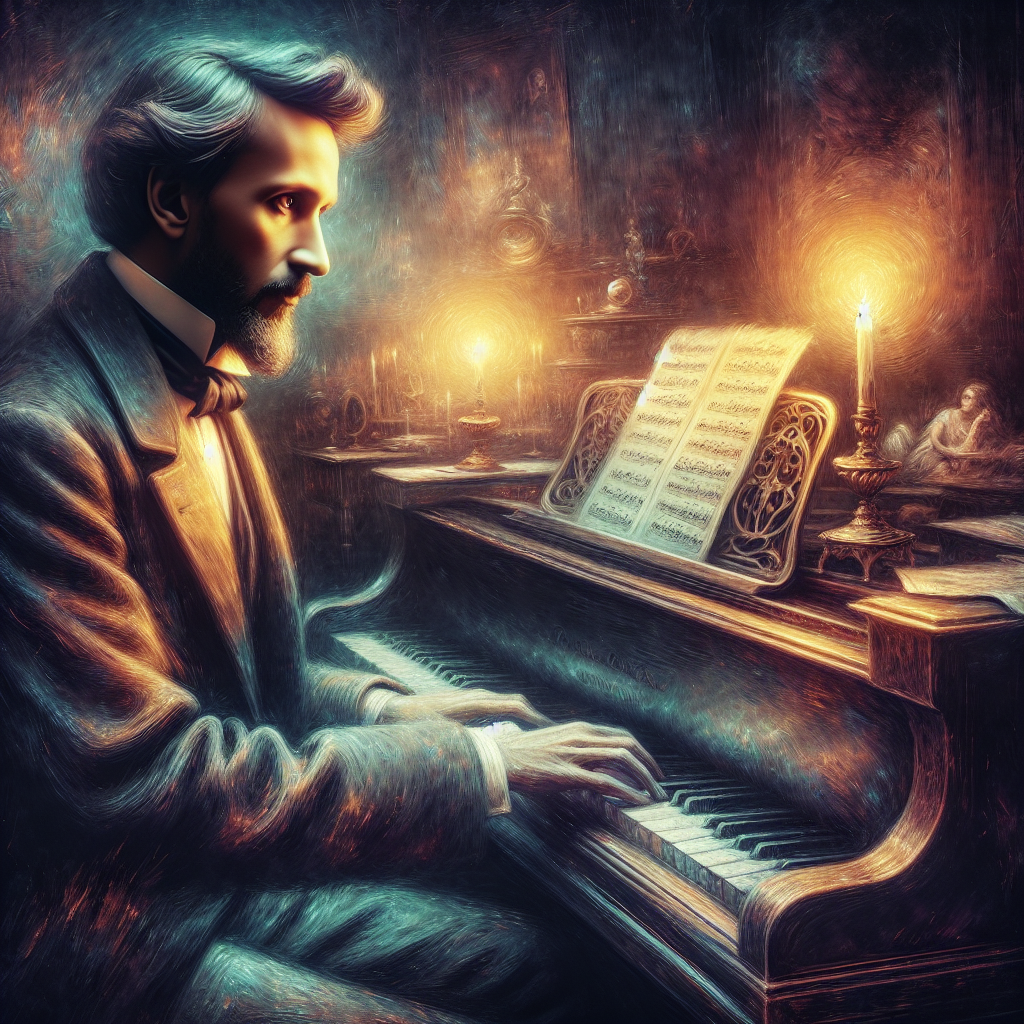
Beethoven in Art – Visual Artists Inspired by His Life and Work
Ludwig van Beethoven, a monumental figure in the history of Western classical music, has captivated audiences for centuries with his groundbreaking compositions. Born in Bonn in 1770, Beethoven’s prodigious talent was apparent from a young age. He moved to Vienna in 1792, where he found his place among the most esteemed composers of his time. However, his journey was not without its struggles. Beethoven’s rapid decline into deafness by his late twenties added a layer of tragedy to his life, shaping his music and deepening its emotive power.
The drama and intensity of Beethoven’s life and work have not only inspired musicians but also artists across generations. From realism to abstraction, visual artists have endeavored to capture the essence of Beethoven, portraying him in various lights—sometimes as a tormented genius and other times as a heroic figure. These artistic depictions serve as a rich tapestry, helping to illuminate the life of a man who changed the course of music history.
In this article, we will delve into the fascinating ways that visual artists have been inspired by Beethoven. We will examine how his life and works have transcended the auditory realm to leave an indelible mark on visual art. By looking at various artists and their renditions, we hope to explore the enduring legacy of Beethoven through a different lens.
Beethoven’s Impact on 19th-Century Portraiture
The 19th century was a time when portraiture was a prevalent form of artistic expression, and Beethoven was a favored subject among many painters. One of the most iconic portraits comes from Joseph Karl Stieler, who painted Beethoven in 1820. Stieler’s portrait captures Beethoven with a stern yet thoughtful expression, sporting his characteristic wild hair and a flowing red scarf, a portrayal that has become one of the most recognized images of him. This painting encapsulates the tenacity and intellectual spirit of Beethoven, offering a glimpse into the intense personality that fueled his music.
Another notable artist, Ferdinand Georg Waldmüller, produced a less conventional representation in 1823. His portrait depicts Beethoven in a more relaxed state, offering a more humanized and approachable view of the composer. Waldmüller’s brushstrokes bring out a softness and vulnerability that other artists often neglected.
These early 19th-century portraits were not merely artistic endeavors but also acts of homage. They reflect an admiration for Beethoven’s contribution to music and his complex persona. The artists aimed to capture not just his physical likeness but also the essence of his character, allowing future generations to emotionally connect with him. Such portrayals continue to serve as historical touchstones that link us back to the real man behind the legendary compositions.
Beethoven in Romanticism and Symbolism
As Romanticism emerged in the late 18th and early 19th centuries, Beethoven became an emblem of the Romantic hero. Artists of this movement admired Beethoven for his passionate, expressive music, and his life of struggle and triumph. The feverish intensity of Romantic art found a kindred spirit in Beethoven’s compositions and his tumultuous life.
Caspar David Friedrich, well-known for his evocative and introspective landscapes, brought a symbolic depth to his depiction of Beethoven. In his work, Friedrich often used expansive, melancholic landscapes to convey the emotional state of his subjects. Though not a direct portrait artist of Beethoven, Friedrich’s symbology in art paralleled the themes found in Beethoven’s music—nature’s grandeur, human solitude, and spiritual quests.
In the Symbolist movement, artists like Gustave Moreau drew on myth and allegory to evoke the profound. Moreau’s portrayal of Beethoven took an almost mythological turn, presenting him not just as a man but as an archetypal figure of suffering and genius. Symbolism’s focus was on the inner experiences, dreams, and subconscious impulses, all of which resonate with Beethoven’s life story and artistic output. Through these artistic interpretations, Beethoven was imbued with an ethereal quality, echoing the transcendental nature of his music.

20th-Century Modernist Views of Beethoven
Moving into the 20th century, modernist artists began to use Beethoven as a subject in even more innovative ways. The advent of modernism brought new perspectives and techniques that diverged significantly from traditional portraiture. Artists like Emil Nolde of the Expressionist movement portrayed Beethoven in abstracted, intense colors and forms that aimed to reflect his impassioned and often turbulent spirit.
Pablo Picasso, renowned for his pioneering work in Cubism, also touched on Beethoven in several of his pieces. Through Cubism, Picasso deconstructed and reassembled his subjects in abstract forms. His sketches and paintings of Beethoven were fragmented and geometrically intense, capturing the multiplicities and complexities of Beethoven’s mind and music. In these abstractions, Picasso paid homage to Beethoven’s own innovative spirit.
The Dadaist and Surrealist movements also explored themes associated with Beethoven. Marcel Duchamp, a key figure in Dada, was fascinated by Beethoven as both a cultural icon and a symbol of high art. Duchamp’s approach often involved subverting traditional views, which can be seen in his irreverent use of Beethoven’s imagery in various readymades and collages. These modernist interpretations challenged viewers to reconsider the conventional representations of Beethoven, thereby redefining his image in contemporary culture.
Beethoven in Contemporary Art
In more recent years, contemporary artists have continued to find inspiration in Beethoven, exploring new mediums and digital formats to pay tribute to the composer. Ann Hamilton, a multimedia artist, created a sensory immersive installation that included readings of Beethoven’s letters and fragments of his music in a space filled with large images of his manuscripts. Her work sought to create a holistic experience that encapsulates the auditory and visual impact of Beethoven’s genius.
Banksy, the elusive street artist, even incorporated Beethoven into his street art, blending traditional and modern elements into stunning murals that juxtapose the harsh, gritty reality of urban life with the timeless dignity of Beethoven’s image. These works highlight Beethoven’s enduring relevance, celebrating his music while also making a statement about its place in the contemporary world.
The intersection of digital art and augmented reality has also opened new avenues for artists to explore Beethoven’s heritage. Projects like “Beethoven10” utilize augmented reality to bring Beethoven’s imagined 10th symphony to life, blending auditory and visual artistry to create an immersive experience. Such innovations underscore how Beethoven continues to inspire creativity across diverse fields, proving that his influence is far from diminishing.
The Legacy of Beethoven in Visual Art
The intersection of Beethoven’s life and legacy with visual arts exemplifies the transcendent nature of true genius. His influence has been a source of inspiration not just for musicians but for artists from every corner of the artistic spectrum. The depictions of Beethoven have varied widely, from the solemn and respectful portraits of the 19th century to the abstract and symbolic representations of the modern era. Each of these artistic interpretations has contributed to a multi-faceted understanding of who Beethoven was and what he represented.
For instance, Joseph Karl Stieler’s traditional portraits offer a glimpse into Beethoven’s real-life presence, capturing a historical moment with both realism and reverence. In contrast, the modernists and contemporary artists provide a more fragmented, allegorical vision that challenges us to see Beethoven not just as a historical figure, but as an eternal symbol of struggle, creativity, and human spirit.
As we look back on these varied artistic renderings, it becomes clear that Beethoven’s impact on visual art reflects a broader cultural reverence and fascination. Each new generation of artists looks to Beethoven as a source of inspiration, exploring the depths of his life and music through their own unique lenses. This continuous cycle of artistic reinterpretation ensures that Beethoven remains ever-present in the cultural consciousness.
Conclusion
Ludwig van Beethoven’s indelible mark on the world extends far beyond his musical compositions. His life, tinged with both triumph and tragedy, has provided fertile ground for visual artists seeking to capture his essence. From the meticulous portraits of the 19th century to the bold and abstract interpretations of modernist and contemporary artists, Beethoven’s image has been immortalized in myriad ways.
Artists across generations have depicted Beethoven not just as a historical figure, but as an enduring symbol of artistic brilliance and human resilience. Through their diverse approaches—whether through realism, symbolism, modernism, or new media—these artists have offered us multiple lenses through which to view and understand Beethoven.
In examining these artistic tributes, we gain a richer, more nuanced appreciation of Beethoven’s impact. His ability to convey profound emotions through music has inspired visual representations that are equally evocative and transformative. Each artistic rendition, whether classical or contemporary, serves as a testament to Beethoven’s lasting legacy.
As we continue to celebrate and reinterpret Beethoven in visual art, we ensure that his influence persists, inspiring future generations to find their own unique ways to engage with and pay tribute to this timeless maestro. Thus, the life and work of Ludwig van Beethoven remain ever-relevant, bridging the gap between past and present, and enriching the human experience across the ages.